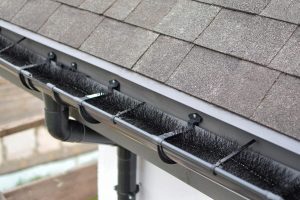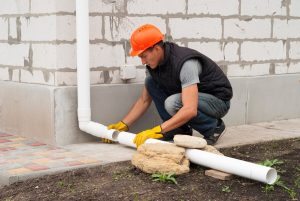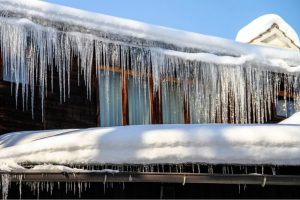How to Get Raccoons and Other Wildlife out of Your Attic
Jun 24, 2023

With April showers come May flowers, and a whole host of other creatures, big and small. Spring is baby season for many animals and cute as they may be, you probably don’t want them nesting in your attic. Unfortunately, invasive animals are the source of many a headache for a lot of homeowners, which is why it’s important to take the right steps in keeping them out of your house in the first place. If it’s too late for preventative measures, it’s equally important to properly assess the situation in order to respond properly if you want to get those pesky animals out for good!
Common Home-Invading Animals
Naturally, the kinds of animals you might find invading your home will depend on where you live. Common home invaders in North America include mice and rats, raccoons and squirrels, birds and even bats. Some areas may even be prone to opossum or snake invaders. Most of these creatures are drawn by the warmth and the dark, which is why attics are often a prime target for animals seeking shelter, though snakes are typically drawn by the presence of rats. Oftentimes, homeowners will also find a mother with her young well, established in their home.
Animal-Induced Damages
Most animals enter a home via holes that were already present in the house in the first place. Such entry-points may be caused by damaged, missing, loose or rotten soffits, siding and shingles. Attic vents and other vulnerable areas that are small enough for an animal are also typical gateways for invasive creatures.
Larger creatures like raccoons might have trouble fitting through smaller openings, but that doesn’t necessarily stop them from inflicting their own damage. Such animals have no problem tearing off shingles or attacking rotting wood if it means access to a safe, warm space they can call home.
Once this occurs, a cyclic pattern might develop as rain causes exposed wood to rot even more, leaving your home vulnerable to even more animals if the problems are left unattended. Worse, once they’re in, animals often cause even more damage inside a house by chomping down on wood and wiring. This is why it is important to get your roofing contractors to deal with even the most minor roofing problems sooner rather than later – a broken eavestrough today could lead to invasive animals tomorrow!
Detecting Invasion
It isn’t difficult to determine whether or not you’ve got animals living in your home, those identifying a particular species is a tad more difficult.
Start by listening for different sound patterns first. Squirrels make little scampering sounds, and are most active early in the day or right before sunset. Raccoons are nocturnal, and make heavier sounds that are almost similar to somebody walking.
Beyond sound, the presence of animal droppings and nesting debris are other clear signs that you’ve got creatures in your attic. Look for sticks and nuts and other such unusual items. Animals like raccoons are also big shredders, so evidence of destroyed ducts will indicate that you’ve got some unwanted animals in the house.
If you’ve spotted a few potential animal gateways, one way to test out whether or not they’re being used is by placing some wads of newspaper at each entry for a couple days. Make sure the newspaper isn’t exposed to wind or rain. What you want to check for is whether or not the wads get disturbed. If they’re moved out of place, you’ll know somebody – or something, rather – has been scurrying in and out of your home.
Dealing with Wildlife Invaders
Once you’ve confirmed that there are animals living in your home, you’ll want to figure out how to get them out. Some problems are more serious than others, and will require special help. Dealing with bats, for instance, will require special help in order to ensure that colonies are removed properly with zero kills. Your roofing contractors will also more likely than not have to get involved in order to fix any damages caused by the animals, or that led to their entry in the first place.
For some situations, however, you may be able to deal with getting rid of the animals yourself.
Hazing
Hazing is a harmless but often effective method that involves scaring the animals with bright lights and loud sounds. Essentially, you need to make their ‘home’ environment feel unsafe, causing them to flee. It is most effective in smaller areas, as larger spaces can provide other ‘safe’ zones for the animals to seek.
Keep in mind that hazing should not be implemented when dealing with a mother and her young. It may lead to abandonment, or babies may get separated from their mothers and end up dying prematurely.
One-Way Doors
One-way doors come in various setups, but they all basically involve setting up a metal contraption outside of an entrypoint so that animals can leave your home – but not come back. You’ll have to seal up entryways but one, so that the animals are forced to exit through the one-way door. This method only works on entry points that are well defined, and that cannot be further damaged by chewing, biting or scratching. Otherwise, the animals will just claw their way around the trap altogether.
One-way doors work better than traps, as this way you can quickly get smaller animals like squirrels to evacuate your home, whereas traps tend to catch other things besides your main target. Like with the hazing technique, it’s also important to ensure you are not dealing with a mother and her young when making use of one-way doors. Typically, one-way doors should be installed by professionals.
Keeping Pests Out
As soon as you’re sure there aren’t any animals left inside your home, seal up all entryways in a secure manner to prevent the cycle from repeating itself. Strong wire, sheet metal or flashing can all do the trick. Have any roofing damage repaired as soon as possible to avoid further incursions and other problems. It’s important to ensure that your house is all clear before taking on the step of sealing up your home – a trapped animal can be very dangerous to itself and to nearby humans.
You may also want to consider trimming any trees back so that animals don’t have an easy time jumping from a branch to your roof. Another common solution is to place sheet metal around the base of a tree trunk so that animals cannot climb the tree and make their way up to your home. Again, consider whether or not you there are baby animals in or around your home. If there are, do not take on this step until they are all cleared off, otherwise the mothers can be separated from their young.
For more information, speak to a roofing contractor in your area. If you have any roofing questions you’d like to ask us please don’t hesitate to call us at (905) 387 3000 or contact us using the contact form on our website. We’d love to hear from you!





